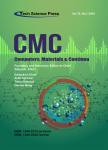Adversarial Training Against Adversarial Attacks for Machine Learning-Based Intrusion Detection Systems
作者机构:Department of Computer ScienceShaheed Zulfikar Ali Bhutto Institute of Science and TechnologyKarachi75600Pakistan
出 版 物:《Computers, Materials & Continua》 (计算机、材料和连续体(英文))
年 卷 期:2022年第73卷第11期
页 面:3513-3527页
核心收录:
学科分类:0831[工学-生物医学工程(可授工学、理学、医学学位)] 0808[工学-电气工程] 0809[工学-电子科学与技术(可授工学、理学学位)] 08[工学] 0805[工学-材料科学与工程(可授工学、理学学位)] 0701[理学-数学] 0812[工学-计算机科学与技术(可授工学、理学学位)] 0801[工学-力学(可授工学、理学学位)]
主 题:Intrusion detection system adversarial attacks adversarial training adversarial machine learning
摘 要:Intrusion detection system plays an important role in defending networks from security ***-to-end machine learning-based intrusion detection systems are being used to achieve high detection ***,in case of adversarial attacks,that cause misclassification by introducing imperceptible perturbation on input samples,performance of machine learning-based intrusion detection systems is greatly *** such problems have widely been discussed in image processing domain,very few studies have investigated network intrusion detection systems and proposed corresponding *** this paper,we attempt to fill this gap by using adversarial attacks on standard intrusion detection datasets and then using adversarial samples to train various machine learning algorithms(adversarial training)to test their defence *** is achieved by first creating adversarial sample based on Jacobian-based Saliency Map Attack(JSMA)and Fast Gradient Sign Attack(FGSM)using NSLKDD,UNSW-NB15 and CICIDS17 *** study then trains and tests JSMA and FGSM based adversarial examples in seen(where model has been trained on adversarial samples)and unseen(where model is unaware of adversarial packets)*** experiments includes multiple machine learning classifiers to evaluate their performance against adversarial *** performance parameters include Accuracy,F1-Score and Area under the receiver operating characteristic curve(AUC)Score.



